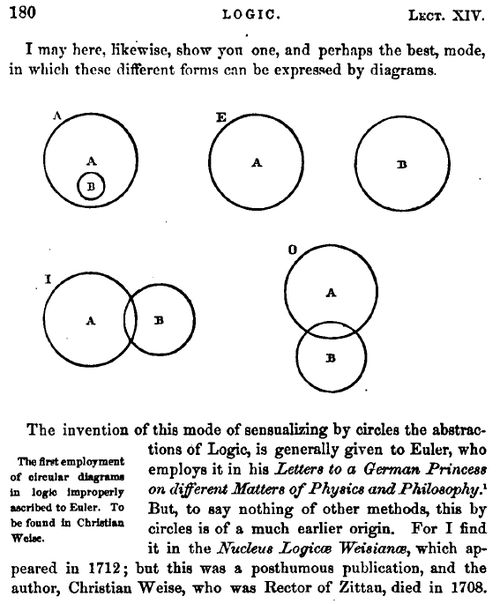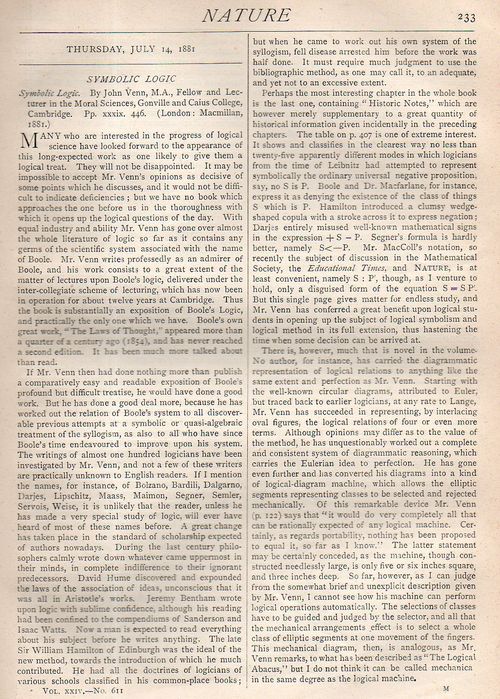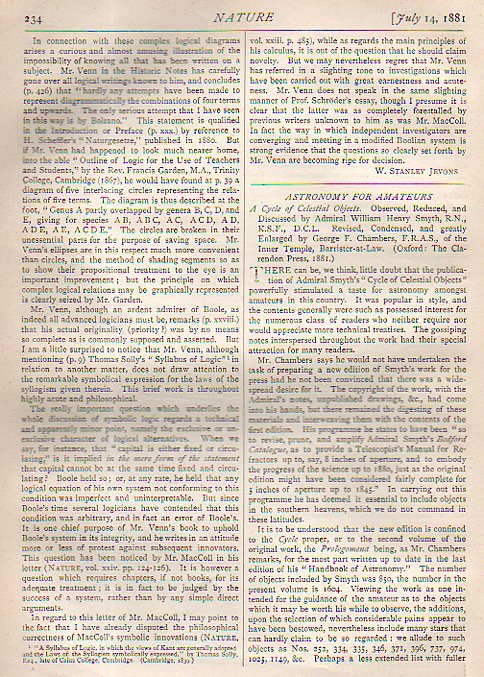JF Ptak Science Books
It seems so unlikely that the Venn diagrams took so long to appear, that it hadn't been Aristotle's Diagrams, or Cartesian Diagrams; rather, these elegant creations--about a different way to represent propositions by diagrams-- belong to Mr. Venn's invention in 1880. Mostly. It was in that year that these famous more fully-developed diagrams first appeared in a paper entitled "On the Diagrammatic and Mechanical Representation of Propositions and Reasonings" in the Philosophical Magazine and Journal of Science. They seem so beautiful, and so simple, and so powerful, and so elegant. So necessary. And so why-did-they-take-so-long-to-appear, so obvious. In a way, they are in that category of The Great Obvious Invention, in a similar vein to Mr. Luke Howard first classifying the names of clouds in 1803. Sometimes things are not obvious until they are.

[Source: Internet Archives, John Venn, Symbolic Logic, 1881, full text.]
Well, almost. The diagrams did mostly make an appearance earlier--though not in the Venn form--in the work of Christian Weise (d. 1708) and then in that of Leonhard Euler (1707-1783), that according to the great William Rowan Hamilton, explained in his work Metaphysics and Logic (1858-1860). But the final form seems to be that of Venn.
Hamilton's work appears so:
They also appeared in the Proceedings of the Cambridge Philosophical Society, volume 4, 1880, in his article "On the employment of geometrical diagrams for the sensible representation of logical propositions" in which he discusses the history of the diagrams, including the Hamilton history. Venn also includes this beautiful logic template of Bolzano:
I found a wonderful book review of Venn's book Symbolic Logic that appeared the following year, appearing in the journal Nature on 14 July 1881, and reviewed by the inimitable W. Stanley Jevons (which is reproduced below).






Comments